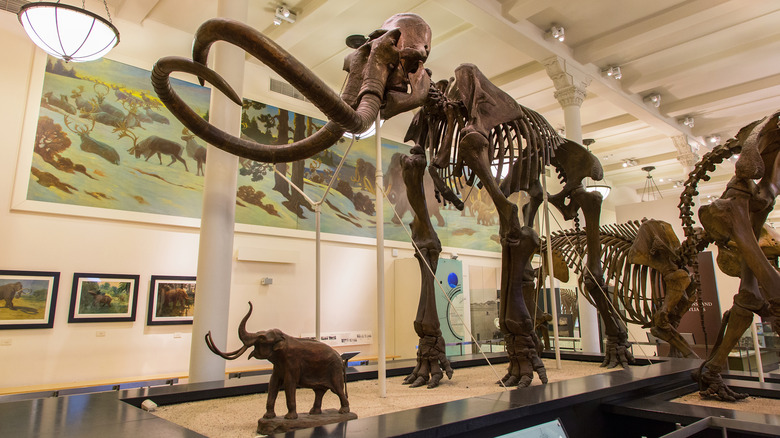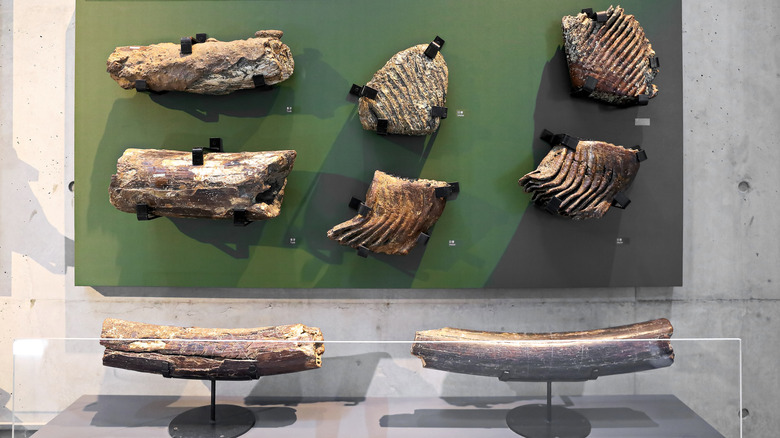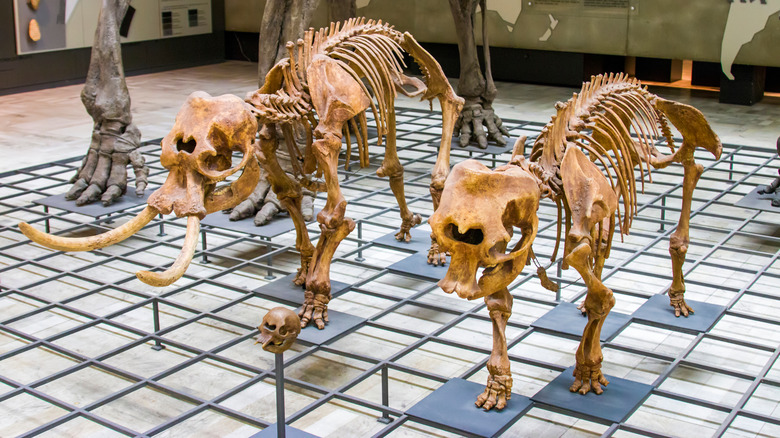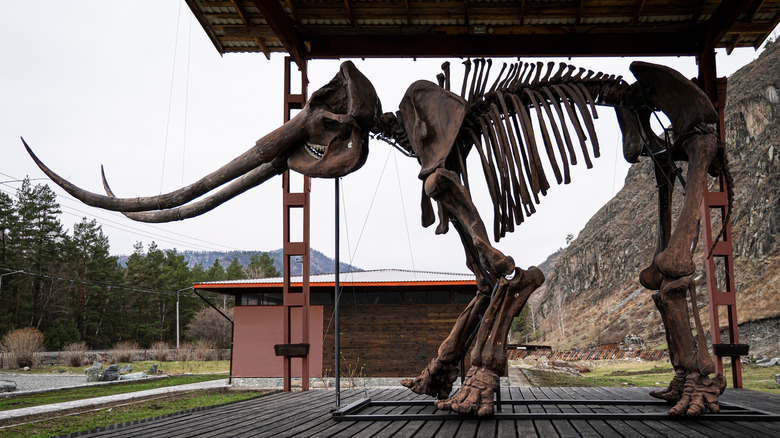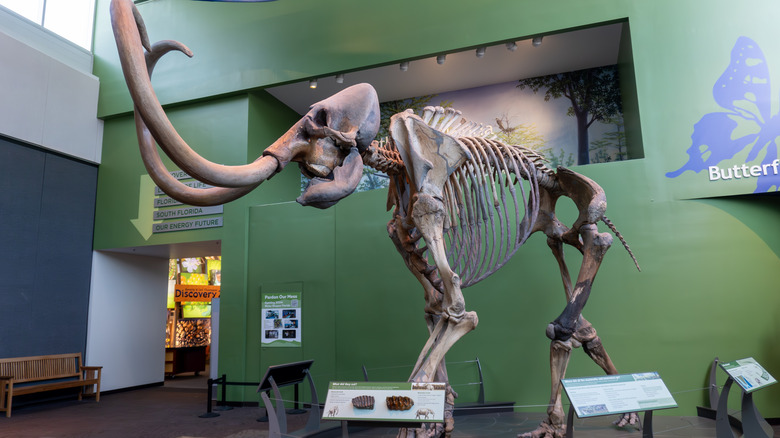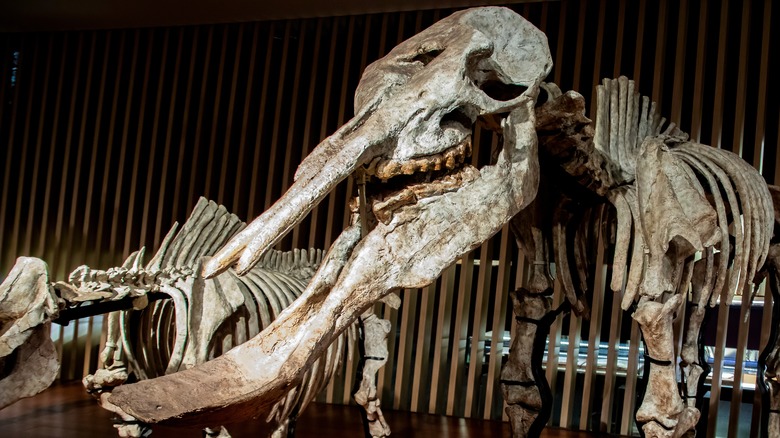Theories Why These 7 Prehistoric Elephants Went Extinct
An elephant is an awe-inspiring sight. The largest land animals on Earth, they stand as tall as 13 feet, weigh up to 15,000 pounds, and eat more than 300 pounds of food every day. Stunning though it all may seem, these numbers are nothing compared to some of the elephant species that walked our planet in the past.
Today, there are only three species of elephant in the world. Two reside in Africa, those being the African bush elephant, the largest of the three, and the African forest elephant. Both make their home in sub-Saharan Africa, while the third species, the Asian elephant, is spread across South Asia. Sadly, all three species, particularly the African forest elephant, are among the many animals on the brink of extinction today, but thousands of years ago, Earth was home to a vast and diverse collection of over 160 different elephant species.
The pachyderms of the past varied dramatically, from massive specimens that would tower over any of today's elephants to dwarf species shorter than humans, and a few species that look downright alien. The fates of those species are shrouded in mystery, but each left clues as to its demise. Climate change and the inability to adapt to changing environments were the most common culprits, but unsurprisingly, we humans likely had a hand in some of those extinctions as well. From the big to the small, from those we killed to those that vanished long before us, here are seven elephant species we'll never see again.
Mammuthus primigenius: the woolly mammoth
Certainly the most famous extinct elephant species is the woolly mammoth, whose scientific name is Mammuthus primigenius. These animals lived from the late Pleistocene to Holocene epochs, roughly 250,000 to 4,000 years ago. They occupied a vast range across the northern latitudes, originating in Northern Asia before spreading throughout Europe and crossing the Bering Land Bridge to the region of modern-day Alaska and Canada.
Living in the extremes of the last ice age, woolly mammoths were well-adapted to their environment. They get their name from their double layer of fur, which could reach 20 inches in length. They had smaller ears than modern elephants, which would have reduced the amount of body heat they lost, and they also had a hump on their backs, which scientists believe functioned like a camel's hump, storing an energy reserve of fat. Size-wise, woolly mammoths were actually on par with today's African elephants, standing up to 11 feet tall and weighing around 6 tons.
Sadly, the woolly mammoth's ice age adaptations played a big role in the species' extinction. As the last glacial period ended, they couldn't adapt to the warmer climate. Humans also had a hand in their demise: Hunting mammoths was common during life in the ice age, the animals providing both food and a thick coat to make clothing from. Woolly mammoths were mostly extinct by 10,000 years ago, but small populations survived on Arctic islands up to about 4,000 years ago.
Mammut americanum: the mastodon
Mammut americanum is commonly named the American mastodon, or simply mastodon, although there were a number of other mastodon species as well. The name "mastodon" has a rather unexpected origin, derived from the Greek words "mastos" and "odon," meaning "nipple tooth". This is due to the bumpy appearance of the creature's molars, which sets them apart from other species like mammoths and modern elephants. In fact, mastodons are only distantly related to those other two species, their evolutionary lines having split over 20 million years ago.
Mastodon fossils have been found throughout much of North America, from modern-day Canada all the way south to Mexico. Fossils have even been discovered 200 miles from the coast, illustrating the extreme sea level rise that has occurred in the millennia since their existence.
Mastodons predated wooly mammoths, living from about four million years ago to 10,500 years ago. They were slightly smaller than mammoths, on par with today's Asian elephants, and favored forested regions in the south of the continent. However, as ice-age glaciers receded, some mastodons began to migrate northward. This proved an ill-fated move: By vastly increasing their range, the mastodon population was split into small factions scattered across North America. Reduced population size leads to inbreeding, and with the northern climate fluctuating between warmth and cold, the mastodons' lack of genetic diversity meant that they couldn't adapt. As with mammoths, hunting by humans may have dealt the final blow to this now-extinct species.
Palaeoloxodon namadicus: the biggest elephant ever
If you think today's elephants are giant, Palaeoloxodon namadicus would have your jaw on the floor. Although no complete fossils of this species have been uncovered to date, the segments that have been found reveal an absolute behemoth of an animal. Scientists estimate that the species likely averaged around 15 feet in height, potentially topping 17 feet from foot to shoulder. Its estimated weight is a stunning 44,000 pounds, about four times the weight of an African elephant. Not only was Palaeoloxodon namadicus the largest elephant known to have existed, but many scientists believe it was the largest land mammal in the history of Earth.
Palaeoloxodon namadicus lived primarily on the Indian subcontinent and into Eastern Asia, earning it the nickname Asian straight-tusked elephant. Palaeoloxodon namadicus lived from the Middle Pleistocene epoch until between 50,000 and 25,000 years ago. The exact causes of the species' extinction are uncertain, but their demise coincides with a worldwide wave of megafauna extinctions, likely due to the same extreme climate change factors that occurred abruptly as the ice age wound down.
It is possible that Palaeoloxodon namadicus coexisted with humans for a period, but unlike the previous entries on this list, there is no evidence to suggest humans hunted this species, and it's certainly understandable that they wouldn't. After all, who wants a face off with 44,000 pounds of wild beast?
Palaeoloxxodon falconeri: a dwarf elephant
The Palaeoloxodon genus of extinct elephants not only included the biggest elephant species in history, but also the smallest elephant species in history: Palaeoloxodon falconeri, which was a dwarf elephant that only reached about 3 feet in height, and juveniles of the species were the size of a common house cat. However, Palaeoloxodon falconeri is believed to have had a very similar life cycle to modern elephants, with individuals reaching maturity around 15 years of age and potentially living into their 70s.
Palaeoloxodon falconeri lived during the Pleistocene epoch on the islands of Sicily and Malta, one amongst several species of dwarf elephants that inhabited the islands of the Mediterranean during this time. Scientists believe that all of these dwarf species evolved from larger elephants, which migrated to the islands from mainland Europe by crossing land bridges exposed by the ice age's lower sea levels. When sea levels rose again, the elephants were trapped, and subsequently evolved to have much smaller bodies in order to survive with more limited resources.
Unfortunately, evolving to have smaller bodies may have been the ultimate undoing of Palaeoloxodon falconeri. The species vanished around 200,000 years ago, during a time of substantial tectonic activity around Sicily and Malta. Tectonic uprisings could have produced new, temporary land bridges that allowed large predators from the mainland, like brown bears and cave lions, to reach the islands and prey on the dwarf elephants.
Stegodon orientalis: Asian elephants' ill-fated neighbor
Stegodon was a prehistoric genus related to mastodons, mammoths, and modern elephants, although scientists are not entirely sure whether it was their ancestor or a separate branch of the Proboscidea order. There were a number of stegodon species, but one in particular, Stegodon orientalis, stands out for its unique connection to one of the surviving elephant species.
Stegodon orientalis had the broadest range of any stegodon species, being widespread across Asia during the Pliocene and Pleistocene epochs, and it lived alongside Asian elephants for hundreds of thousands of years. This presents a fascinating case for scientists, as the last stegodons disappeared roughly 12,000 years ago, but the Asian elephant has survived to this day. How could two elephant species occupying the same area at the same time meet two completely different fates?
There is some evidence that humans may have interacted with stegodons, as stone tools have been found alongside stegodon fossils. However, no evidence has been found to show that humans actively hunted this species. Instead, scientists believe that the stegodon's fate was a result of its diet. Asian elephants have certain behavioral adaptations, some of which put them ahead of their stegodon cousins. While Asian elephants foraged for food in both woodland and savanna regions, Stegodon orientalis strictly ate from the forests. This meant that they could not adapt to the dramatic climate change at the end of the Pleistocene, while Asian elephants — not reliant on a single food source — persisted.
Mammuthus columbi: the Columbian mammoth
The Columbian mammoth has been overshadowed in reputation by the more famous woolly mammoth, but it is equally worthy of attention. Thought to have been the largest species of mammoth, the Columbian mammoth could top 13 feet in height and likely weighed around 22,000 pounds, double the weight of most modern elephants. Their tusks could reach up to 16 feet in length, putting them amongst the longest tusks of any elephant species in history.
Columbian elephants lived further south than woolly mammoths, spreading from the present-day United States to Costa Rica. Being in a warmer climate than their woolly counterparts, Columbian mammoths had hardly any hair, not unlike the elephants that survive today. Despite their differences, DNA analysis indicates that Columbian elephants actually descended from woolly mammoths that interbred with another, as-yet-undetermined mammoth species.
Columbian mammoths vanished from the Earth around the same time that woolly mammoths did, and like nearly every other species on the list, it was climate change that led to their extinction. Having such massive bodies, Columbian mammoths spent 16-18 hours per day just eating. Requiring 150,000 calories daily, any disruption to the species' food supply would have had a catastrophic impact.
Platybelodon danovi: the shovel jaw
The Platybelodon genus had bodies similar to modern elephants, only slightly smaller. However, their faces looked positively alien from a modern viewpoint. Their trunks were one with their upper jaws, rather than hanging low like most other members of the Proboscidea order. Even more notable were the massive, shovel-like, lower jaws of these creatures, which extended as far as their snouts. They had four tusks, two on the upper jaw and two on the lower jaw, with the lower tusks extending 2 to 3 feet in length.
It's no surprise that Platybelodons looked so different from modern elephants, as they date back far further than any of the other entries on this list. While mammoths, mastodons, and elephants all lived in the Pleistocene epoch, Platybelodons didn't even make it that far, living from the mid-Miocene epoch to the early Pliocene, when they were spread across Africa, Eurasia, and North America. Five species of Platybelodon have been identified thus far, with the type species being Platybelodon danovi.
Scientists aren't entirely sure what purpose the Paltybelodons' shovel jaws served. The prevailing hypotheses are that they either used their jaws to scoop plants out of marshlands or to cut up vegetation and strip tree bark for food. Animals with such highly specialized traits are inherently vulnerable as they struggle to adapt to change. When the globe started cooling ahead of the last ice age and the land became arid, Platybelodons lost their food sources and went extinct.

